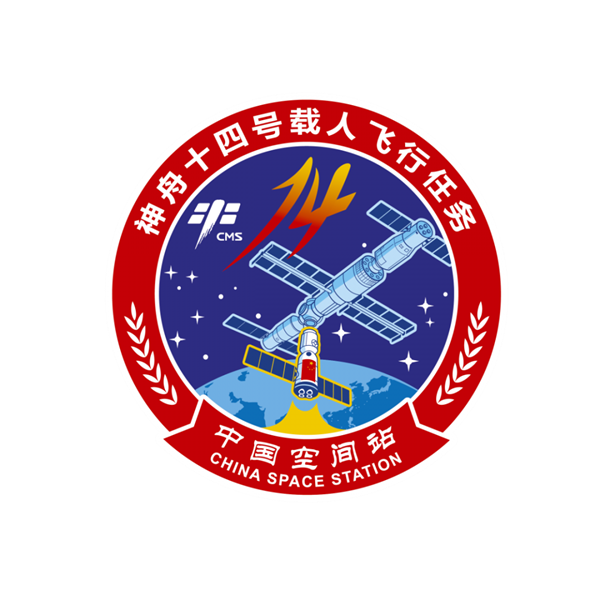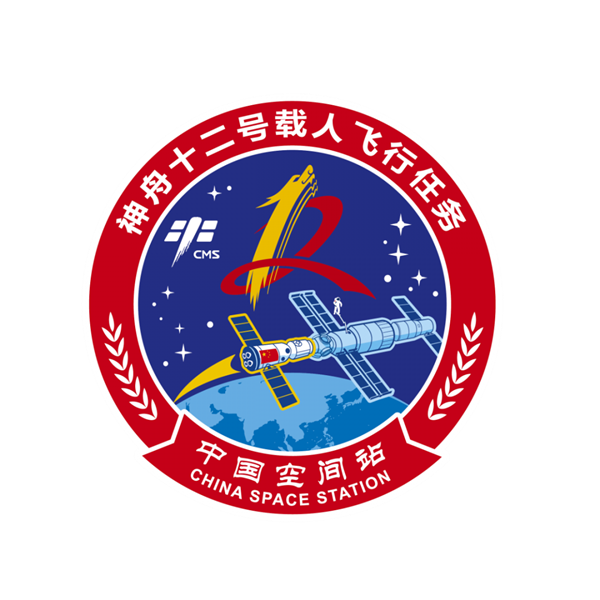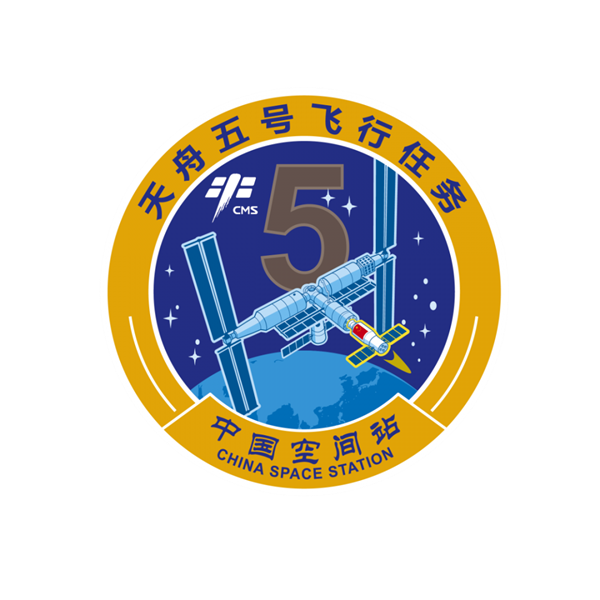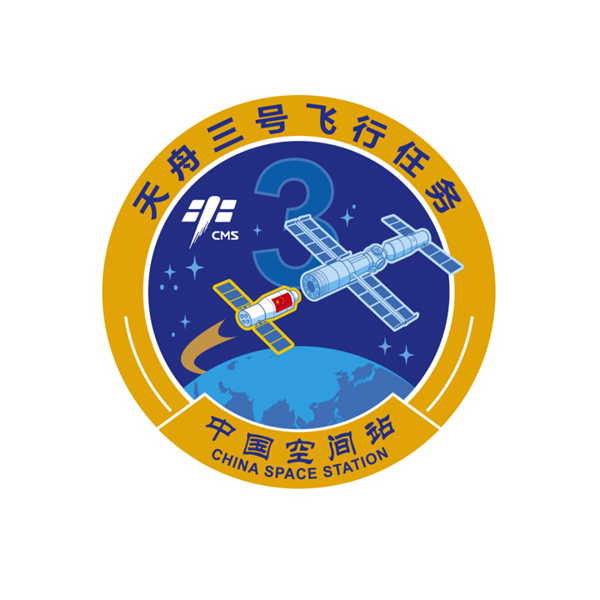




中国空间站(天宫空间站,英文名称 China Space Station)是中华人民共和国建设中的一个空间站系统,预计在2022年前后建成。空间站轨道高度为400~450公里,倾角42~43度,设计寿命为10年,长期驻留3人,总重量可达180吨 ,以进行较大规模的空间应用。1992年,中国政府就制定了载人航天工程“三步走”发展战略,建成空间站是发展战略的重要目标。
2022年5月10日8时54分,天舟四号货运飞船采用自主快速交会对接模式,成功对接空间站天和核心舱后向端口。
据中国载人航天工程办公室消息,在神舟十四号载人飞船与空间站组合体成功实现自主快速交会对接后,航天员乘组从返回舱进入轨道舱。按程序完成各项准备后,航天员陈冬成功开启天和核心舱舱门,北京时间2022年6月5日20时50分,航天员陈冬、刘洋、蔡旭哲依次全部进入天和核心舱。后续,航天员乘组将按计划开展相关工作。
北京时间2022年7月24日14时22分,搭载问天实验舱的长征五号B遥三运载火箭,在中国文昌航天发射场点火发射,发射取得圆满成功。北京时间2022年7月25日3时13分,问天实验舱成功对接于天和核心舱前向端口,整个交会对接过程历时约13小时。8月,中国空间站第2个实验舱段——梦天实验舱已运抵文昌航天发射场。 空间站建造阶段后续飞行任务标识发布。 10月,梦天实验舱将实施发射 。
天宫空间站(又名中国空间站)是中国从2021年开始建设的一个模块化空间站系统,为人类自1986年的和平号空间站及1998年的国际空间站后所建造的第三座大型在轨空间实验平台。基本构型由天和核心舱、问天实验舱和梦天实验舱三个舱段组成[3]。
作为中国载人航天工程“三步走”发展战略中的“第三步”,天宫空间站的在轨建造以2021年4月29日天和核心舱的成功发射为开始标志。按计划,中国将在2021年至2022年期间择机进行12次飞行任务,发射多艘天舟货运飞船、神舟载人飞船及问天实验舱和梦天实验舱与核心舱对接以完成天宫空间站的建设[4]。
Die Chinesische Raumstation (chinesisch 中國空間站 / 中国空间站, Pinyin Zhōngguó Kōngjiānzhàn) ist eine vom Büro für bemannte Raumfahrt betriebene, seit dem 5. Juni 2022 ständig besetzte Raumstation in einem erdnahen Orbit von etwa 340 bis 420 km Höhe mit einer Bahnneigung von rund 42°.[3]
Der Aufbau der Station begann am 29. April 2021 mit dem Start des Kernmoduls „Tianhe“. Bis Ende 2022 soll sie um zwei Wissenschaftsmodule erweitert werden, die in einer T-Form fest mit dem Kernmodul verbunden sind, 2023 dann um ein freifliegendes Weltraumteleskop in der Nähe, das für Wartungsarbeiten angekoppelt werden kann.[4] Stand 2021 ist vorgesehen, die Raumstation nach einer gewissen Betriebsphase um ein zweites T zu einer 干-Form zu erweitern,[5] dann mit einer ständigen Besatzung von sechs Raumfahrern. Da die Raumstation gelegentlich bewegt werden muss, darf sie nicht mehr als 180 t Masse besitzen. Ein weiterer Ausbau ist daher nicht möglich.[6][7]
天宮号宇宙ステーション(てんきゅうごううちゅうステーション)または中国宇宙ステーション(ちゅうごくうちゅうステーション、Chinese Space Station,CSS)[4]は、中国が天宮計画で建設中の宇宙ステーションである。三つのモジュールで設計されており、総質量は80トンに達すると予想されている。天和コアモジュールは2021年4月に打ち上げられ[5]、問天実験棟モジュールは2022年7月に打ち上げられた[6]。
2022年までに打ち上げ予定の宇宙ステーション。試験機ではなく、旧ソ連のミールに匹敵するサイズの完成した宇宙ステーションと位置づけられている。コアモジュール「天和」(てんわ)、2つの実験モジュール「問天」(もんてん) と「夢天」(むてん)、無人補給船「天舟」(てんしゅう) といった構成要素が公表されている。打ち上げには長征5号B型ロケットが用いられる。
2016年6月に国際連合宇宙局は中国国家航天局と「天宮」の利用機会を国際連合加盟国にも開放する協定を結んでおり、日本の東京大学を含む17ヵ国23機関による9件の科学実験が予定。計画当初は天宮の名称で呼ばれていたが、2021年現在の公式発表などでは中国宇宙ステーション(China Space Station(CSS), 中国空間站)と呼ばれ、天宮の名称は使用されていない[4]。
Tiangong (Chinese: 天宮; pinyin: Tiāngōng; lit. 'Palace in the Sky'),[4][5] officially the Tiangong space station[6] (Chinese: 天宫空间站; pinyin: Tiāngōng kōngjiānzhàn), is a space station being constructed by China and operated by China Manned Space Agency (CMSA) in low Earth orbit between 340 and 450 km (210 and 280 mi) above the surface. Being China's first long-term space station and the core of the "Third Step" of the China Manned Space Program, once completed, Tiangong will have a mass between 90 and 100 t (200,000 and 220,000 lb), roughly one-fifth the mass of the International Space Station and about the size of the decommissioned Russian Mir space station.
The construction of the station is based on the experience gained from its precursors, Tiangong-1 and Tiangong-2.[7][8][9] The first module, the Tianhe ("Harmony of the Heavens") core module, was launched on 29 April 2021,[4][5] followed by multiple crewed and uncrewed missions and two more laboratory cabin modules Wentian ("Quest for the Heavens") and Mengtian ("Dreaming of the Heavens") to be launched in 2022.[7] Chinese leaders have expressed the hope that the research conducted on the station will improve researchers' ability to conduct science experiments in space beyond the duration and capacity offered by China's existing space laboratories.[10]
La station spatiale chinoise (abrégé en SSC ; en chinois : 中国空间站 ; pinyin : Zhōngguó kōngjiānzhàn ; en anglais : China Space Station ou CSS) est une station spatiale d'une soixantaine de tonnes de la république populaire de Chine comportant trois modules dont l'assemblage doit être effectué au début de la décennie 2020. La station spatiale, placée sur une orbite basse de 300 à 400 km, devrait permettre d'effectuer des expériences scientifiques en micro gravité, contribuer à la mise au point de technologies spatiales et préparer les équipages chinois aux vols de longue durée. Cet engin spatial succède à deux prototypes de station spatiale Tiangong 1 (2011) et Tiangong 2 (2016) occupés brièvement par des équipages. La station spatiale est desservie par le vaisseau ravitailleur Tianzhou et héberge pour des durées de six mois les équipages dont la relève est assurée par le vaisseau Shenzhou.
La Stazione spaziale Tiangong (in cinese 天宮S, TiāngōngP, letteralmente "Palazzo Celeste") è una stazione spaziale modulare cinese in fase di costruzione, parte del quarto programma di stazioni permanenti nello spazio della storia (dopo le Saljut, Skylab, la Mir e la ISS). Svolgerà per lo più missioni scientifiche e la sua costruzione è stata spinta dal governo cinese anche per l’impossibilità di partecipare al progetto ISS. La sua costruzione avverrà nell'arco di 11 missioni tra il 2021 e il 2023. Il primo modulo è stato lanciato il 29 aprile 2021 alle 03:23 UTC, dal centro spaziale di Wenchang sull'isola di Hainan.[3]
La costruzione della stazione si basa sull'esperienza maturata dai suoi precursori, Tiangong-1 e Tiangong-2 all'interno del Programma Tiangong.[4]
Tiangong 3 (chino: 天宫; pinyin: Tiāngōng; lit. 'Palacio en el cielo'), oficialmente la Estación Espacial Tiangong (chino: 天宫空间站), o también conocida por CSS por sus siglas en inglés es la tercera estación espacial que está actualmente en construcción por la Administración Espacial Nacional China (CNSA) en la órbita baja de la Tierra entre 340 y 450 km sobre la superficie. Siendo la primera estación espacial de larga duración de China, y multimodular, es el objetivo del "Tercer Paso" del Programa Espacial Tripulado de China. Una vez completada, la Estación Espacial Tiangong tendrá una masa de entre 80 y 100 t, aproximadamente una quinta parte de la masa de la Estación Espacial Internacional y del tamaño de la estación espacial rusa Mir, ya clausurada.
La construcción de la estación se basa en la experiencia adquirida con sus precursoras, Tiangong-1 y Tiangong-2. El primer módulo, el módulo central Tianhe ("Armonía de los Cielos"), se lanzó el 29 de abril de 2021, seguido de múltiples misiones con y sin tripulación y dos módulos más que se lanzarán en 2022. Los dirigentes chinos esperan que las investigaciones realizadas en la estación mejoren la capacidad de los investigadores para llevar a cabo experimentos científicos en el espacio, más allá de la duración que ofrecen los actuales laboratorios espaciales de China.2
Космическая станция «Тяньгу́н» (кит. 天宫空间站), также известная как Китайская космическая станция (кит. 中国空间站, англ. CSS, China space station) — пилотируемая многомодульная космическая станция КНР, летающая по низкой околоземной орбите на высоте от 340 до 450 км над поверхностью Земли.
Базовый модуль станции, «Тяньхэ», был запущен 29 апреля 2021 года, модуль «Вэньтянь» — 24 июля 2022 года. Запуск третьего модуля «Мэнтянь» запланирован на октябрь 2022 года[2], летящего рядом телескопа «Сюньтянь» — в конце 2023 года[3].
«Тяньгун» стала третьей в мире многомодульной пилотируемой орбитальной станцией, после станций «Мир» и МКС, но меньшей по размерам. В составе из трёх модулей она будет иметь массу более 60 т, а со временем может быть расширена до 100 и более тонн[4].
Это третий китайский посещаемый орбитальный объект, запущенный по программе «Тяньгун». Первыми двумя были космические лаборатории (кит. 空间实验室) «Тяньгун-1» и «Тяньгун-2», предназначенные для отработки процессов стыковки и экспериментов, связанных с длительным пребыванием экипажей на орбите.










